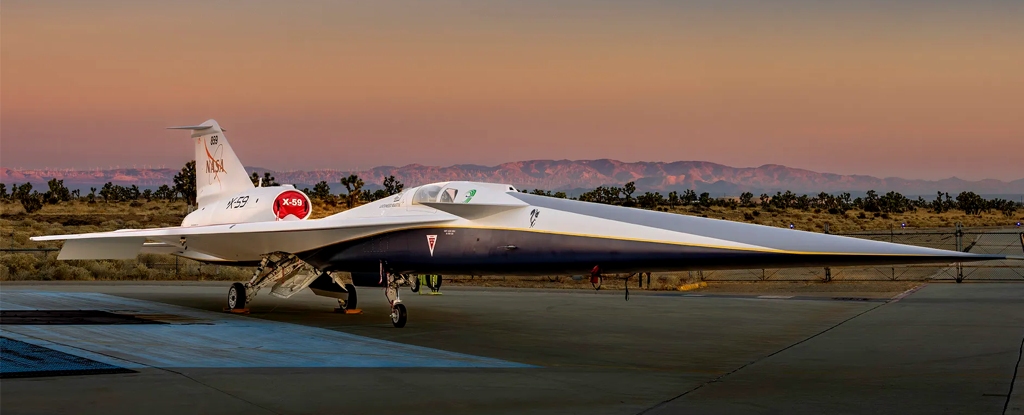
When we think of space planes, NASA’s latest X-59 (its name alone exudes mystery) unveils a captivating vision that lives up to all expectations.
Introducing their innovative silent supersonic plane, NASA has crafted a design to reduce the sonic boom generated upon surpassing the speed of sound. Set to soar at 1.4 times the speed of sound, its inaugural flight is scheduled for later this year.
Conceived through a collaborative effort between NASA and Lockheed Martin, this aircraft embodies a straightforward yet ambitious goal. The aspiration is to transform air travel by introducing a new era of commercial jets capable of surpassing the speed of sound.
Crucially, these upcoming supersonic aircraft represent the next evolutionary step, following the pioneering Tupolev TU-144 (first flight on December 31, 1968) and Concorde (first flight on March 2, 1969).
Supersonic flight entails traveling at speeds surpassing the sound barrier. The speed of sound varies with air density, approximately 1,224 km/hour at sea level. Flying slower classifies as subsonic while exceeding this speed achieves supersonic status. Aircraft breaking the sound barrier generates the iconic sonic boom, though it doesn’t occur precisely at the moment of breaking the sound barrier.
The sonic boom results from compressed shock waves, creating a constant sound whenever the aircraft exceeds the speed of sound. Observers on the ground only perceive the boom when pressure waves traverse over them. Recognizing the potential distress caused by the sound, the X-59 aims to mitigate this disturbance.
The X-59’s design resembles something from a sci-fi film, measuring 30 meters in length and 9 meters in width. With a slender, tapered nose occupying around a third of its total length, the expectation is that this feature will effectively disperse the shockwaves responsible for generating the sonic boom.
Due to its unique design and extended nose, the pilot is positioned approximately halfway along the aircraft, posing challenges for a clear forward view through the window. To overcome this, high-resolution cameras transmit signals to 4K monitors within the cockpit, forming an integral component of the eXternal Vision System.
Concorde concluded its service in 2003 after a 27-year flying tenure. Since then, our options have been confined to subsonic flights, resulting in lengthy ocean crossings. In contrast, Concorde could swiftly complete a trans-Atlantic journey from JFK to Heathrow in just under three hours, whereas contemporary jets now take approximately seven hours for the same route.
If the upcoming X-59 test flights prove successful later this year, there is a hopeful anticipation that we may all witness accelerated travel times across the globe in the years ahead.
The content was initially released on Universe Today.





